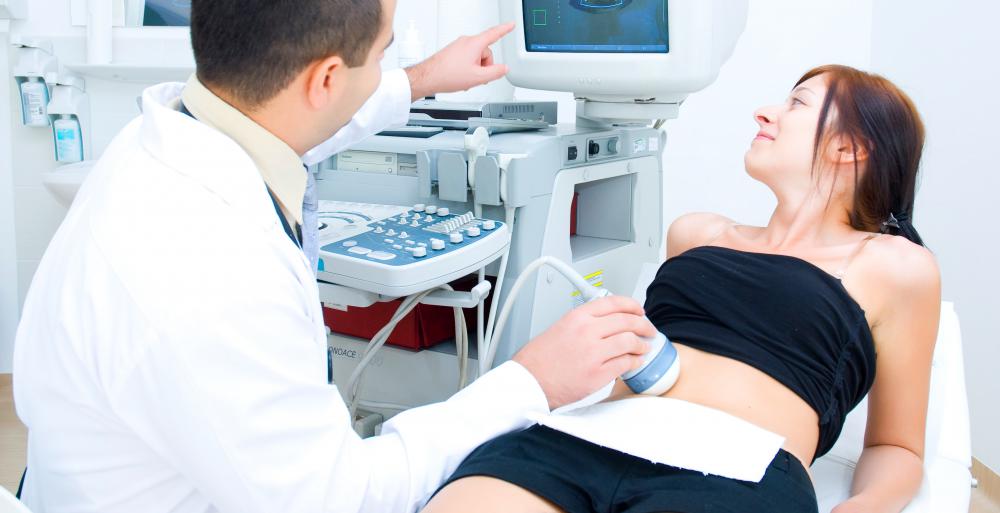At WiseGEEK, we're committed to delivering accurate, trustworthy information. Our expert-authored content is rigorously fact-checked and sourced from credible authorities. Discover how we uphold the highest standards in providing you with reliable knowledge.
What is Diastasis Recti?
Diastasis recti, which is also commonly known as abdominal separation, is a condition where the right and left sides of the muscle covering the front of the belly, called the rectus abdominis, become separated. It is most commonly found in newborns, particularly babies who are born prematurely or are of African American descent, and pregnant women. Diastasis recti is usually only a cosmetic issue and is not typically dangerous or life-threatening.
From the outside of a baby’s body, diastasis recti has a ridge-like appearance. It sits in the middle of the belly and runs approximately from the belly button up to the breastbone. The size of the ridge depends on how much the muscle is straining in a particular area. Often the ridge can be so subtle that it can only be seen easily when the baby is held in a sitting position.

In women who are in the early stages of pregnancy, signs of diastasis recti can appear as extra soft tissue and skin on the front wall of the abdomen. This can develop into a bulge which varies in size, depending on the severity of the condition. In the most extreme cases, parts of the baby can be seen pressing out in a bulge, while in other situations it may just be possible to see part of the uterus.

Diastasis recti is a common condition, which can be diagnosed with a physical exam, and is not serious or life-threatening. If a patient has previously had surgery of the abdomen, a doctor will usually need to rule out incisional or epigastric hernia before making a diagnosis. An ultrasound can help to clarify the diagnosis should this situation arise.

The condition will usually eventually heal without intervention. Women who have given birth can help to speed the healing process by regularly performing a series of exercises known as the Tupler technique. The most common possible complication is when a hernia grows between the muscles before they can bond. This is typically corrected with surgery.

Diastasis recti is most commonly caused by excessive pressure on the wall of the abdomen during pregnancy. For this reason, any sort of exercise or activity that results in prolonged or strong tension in the abdomen is generally not recommended for women who are in their second trimester of pregnancy. Repeated pregnancies or the strain of carrying multiple fetuses can also increase the chances of getting the condition.
AS FEATURED ON:
AS FEATURED ON:















Discuss this Article
Post your comments